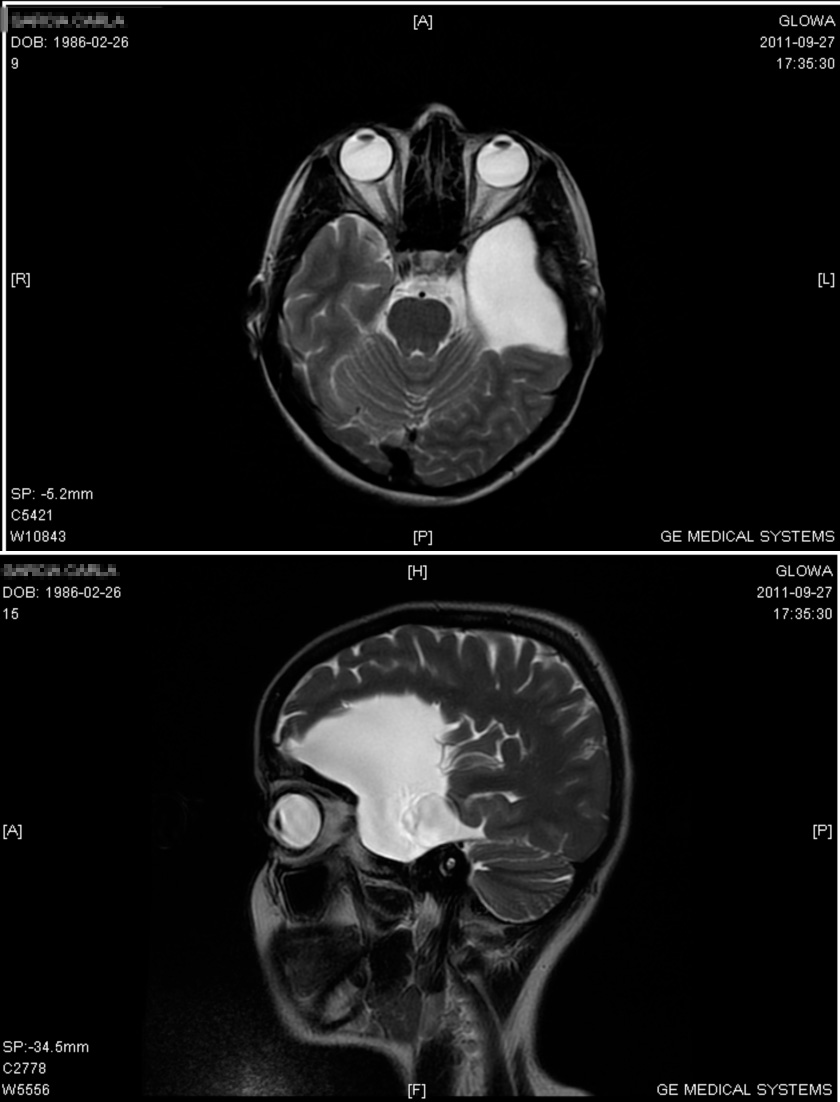Arachnoid Cysts, Intracranial

Description
Arachnoid cysts are extraparenchymal, nonneoplastic accumulations of fluid with density similar to that of cerebrospinal fluid. They account for approximately 1% of intracranial space-occupying lesions, although studies since the advent of CT scanning suggest a higher percentage. A striking male preponderance has been observed (summary by Wilson et al., 1988).
Clinical FeaturesHanda et al. (1981) reported 2 brothers, aged 10 months and 3 years, with macrocrania and bilateral arachnoid cysts in the middle cranial fossa. They cited a Japanese report of 2 affected brothers.
Pomeranz et al. (1991) described 2 brothers and a sister with intracranial arachnoid cysts. One of the brothers had symmetric, bilateral, temporoparietal convexity cysts, and the others had singular, unilateral cysts. Three other sibs were unaffected. The parents were not related; the pedigree in Figure 3 of the article shows the mother as affected, but no reference to such was made in the article.
Wilson et al. (1988) described a teenaged brother and sister with almost identical unilateral arachnoid cysts in the posterior left hemisphere, extending inferiorly from the cerebral convexity to the middle cranial fossa and posterior fossa. Both sibs had microcephaly and developmental delay. At age 9 years, the sister began having seizures, which were well-controlled by phenobarbital and phenytoin. The brother had generalized grand mal seizures, occurring about twice monthly, usually during sleep.
Helland and Wester (2007) reported 12-year-old monozygotic twin girls from Norway with mirror image arachnoid cysts. One sister came to attention due to a severe headache following minor head trauma. MRI revealed an arachnoid cyst in the right cerebellopontine angle. The cyst was removed without complications. Brain MRI of her sister showed a mirror image arachnoid cyst in the left cerebellopontine angle. Both girls had normal psychomotor development. Helland and Wester (2007) noted that location of an arachnoid cyst in the cerebellopontine angle is uncommon (about 5.4% of their cases), and suggested that the mirror imaging observed in these twins represented a type of chirality resulting from enantiomer information in the early embryo.
InheritanceWilson et al. (1988) stated that reports of arachnoid cysts suggest an autosomal recessive or multifactorial pattern of inheritance.